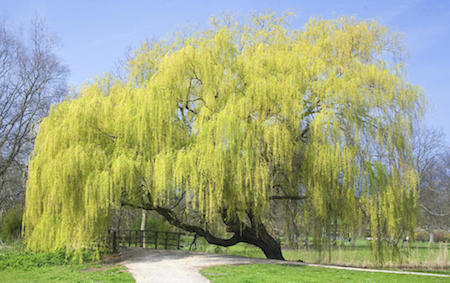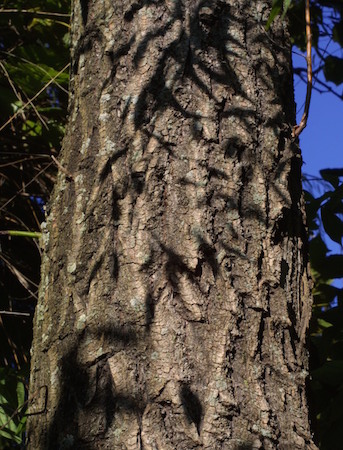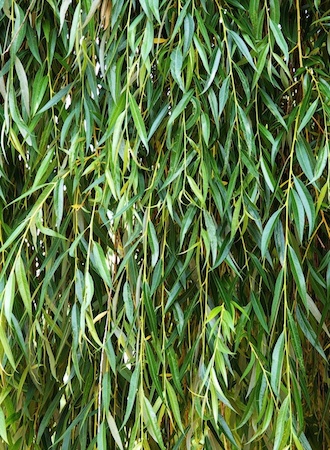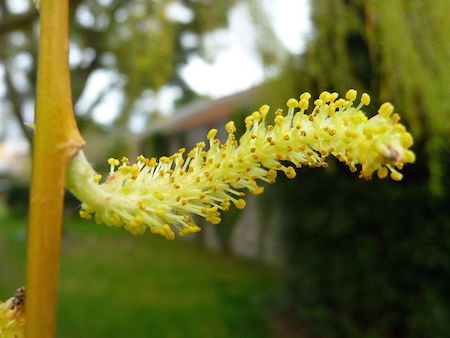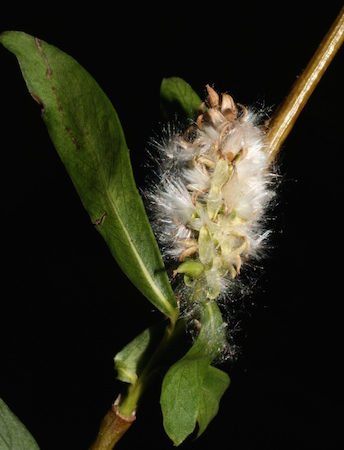Weeping Willow
Specifications
- Latin (scientific) name: Salix babylonica
- Life expectancy: 50 years
- Height: 80 feet
- Circumference: 3-4 feet
-
Special characteristics:
This is an introduced tree from tropical Asia. Its most striking aspect is its weeping (pendulant) form. It’s a symbolic tree, and is sometimes planted in Asia near cemeteries to signify an association of grief for the loved one in the grave.
When it rains, the tree weeps tears of raindrops. Find this tree during or just after a shower and you’ll see for yourself. It’s very moving.
The drooping twigs are fine in texture and feel soft to the touch. You’ll feel like you are walking through a collection of lush living tassels when you part a cluster of low hanging twigs.
This tree loves water. In fact, it must have access to large amounts of water to thrive. It does best near creeks, lakes, or ground depressions where water pools after rain showers.
-
Annoyance factors:
The wood is very brittle and breaks easily. Kids like to climb this tree because of its low branches, but need to be warned not to grab little branches because they break off easily.
The short life expectancy of this tree creates real human tears. It’s a sad day when this treasured tree passes away. It’s a tree that is always missed not only by the land owner but the community at large.
Dead wood: Lots of fine little twigs drop off when a little wind comes up. This creates a cleanup problem if you want a neat landscape.
-
Photo Credits:
Tree: Contentinjection.com
Bark: Steven J. Baskauf, Vanderbilt University Bioimages
Leaves: Joaquim Alves Gaspar, Lisboa, Portugal, Wikipedia Commons
Flower: Oroussei, Wikipedia Commons
Seeds: Steven J. Baskauf, Vanderbilt University Bioimages

